| Designation: | T-72M1 |
 |
|---|---|---|
| Manufacturer: | JSC Research and production corporation UralVagonZavod | |
| Product type: | Armoured Vehicles | |
| Name: | Modernization of the vehicle |
In 2001 the Russian Ural Railway Wagon Factory (Uralvagonzavod) in Nizhnyi Tagil revealed that it had completed the prototype of an upgraded version of the T-72M1 MBT for the export market. The T-72M1 is the export version of the Russian Army T-72A MBT.
The actual design work for this upgrade was carried out by the Ural Design Office of Transport Mechanical Engineering. The upgrade covers a number of key areas including armour, mobility, and firepower enhancements to the 125 mm weapon, ammunition and fire-control system.
Some of the subsystem components of the upgraded T-72 MBT are also used in the more recent T-90 MBT, which is also produced at Uralvagnozavod. The T-90 is in service with the Russian Army and India and has been ordered by Algeria.
According to the manufacturer, the standard T-72M1 has a combat effectiveness of 1, the latest upgraded T-72M1 has a combat effectiveness of 1.99, while the latest T-90 has a combat effectiveness of 2.1
The T-72M1 upgrade package is modular so that potential customers can select the parts they need to meet their own specific operational requirements.
As of early 2008, it is understood that two prototypes of the upgraded T-72M1 had been built, with the major difference being that one of these was fitted with the Arena active defence system already demonstrated on a number of other armoured fighting vehicles.
In 2006 Algeria signed a major arms contract with Russia which is understood to have included the purchase of 180 of the latest T-90S export MBTs plus the upgrading of part of the existing Algerian fleet of 400 T-72 series MBTs.
Some sources have indicated that up to 250 Algerian T-72 series MBTs could be upgraded but details of the actual upgrade have not yet been disclosed.
The overall layout of the upgraded T-72M1 MBT is identical to the standard vehicle with the driver's compartment at the front, fighting compartment in the centre and the diesel power pack at the rear. The main differences are at the subsystem level.
The standard T-72M1 weighs around 43 tonnes and is powered by the V-46-6 diesel developing 780 hp that gives a power-to-weight ratio of 18.1 hp/tonne. This gives a maximum road speed of 60 km/h, with a speed on a dirt road of 35 to 40 km/h.
The latest upgraded T-72M1 MBT weighs 45 tonnes and is currently offered with a choice of two different diesel engines. The first is a V-92S2 diesel developing 1,000 hp, which gives a power-to-weight ratio of 22.2 hp/tonne.
The second is the V-84MS that develops 840 hp and gives a power-to-weight ratio 18.6 hp/tonne. The installation of the more powerful engine is claimed to increase its road speed to 65 km/h and its speed on a dirt road to 40 to 45 km/h.
The new diesel engine is provided with automatic gearshifting with a manual reversionary mode.
The track and torsion bar suspension system has also been upgraded. The road wheels now have increased carrying capacity and the torsion bars have also been strengthened. New hydraulic shock-absorbers have been fitted for improved cross-country ride. New longer-life tracks have been fitted with rubber bushes and rubber pads can be fitted for travelling on roads.
For improved firepower the standard 125 mm 2A46 smoothbore tank gun has been replaced by the more recent 125 mm 2A46M. This has a built-in boresighting device that allows the weapon to be boresighted without the crew leaving the vehicle. According to the manufacture it takes one minute to boresight the weapon.
The improved fire-control system now allows the upgraded T-72M1 to fire the 9M119 series laser-guided missile out to a maximum range of 5,000 m. The latest versions of this missile have a tandem HEAT warhead to defeat MBTs fitted with explosive reactive armour (ERA).
Standard types of 125 mm ammunition can be fired including 3BM17 with APFSDS projectile 3BM42, 3BVK16 with HEAT projectile 3BK18M and HE-FRAG projectile 3VOF36 with projectile 3OF26.
First-round hit probability is further enhanced by the upgraded fire-control system and the installation of the French Thales Optronique Catherine thermal imager, which has a claimed detection range of 5,000 m and a identification range of 3,000 to 3,500 m.
The gunner has a two axis stabilised sight that combines day/thermal and laser guidance channels, in addition he has a TPD-K1 standby laser sight as a backup. The tank commander has a PNK-4S day/night sight that is stabilised in the vertical plane only.
According to Russian sources, the daytime identification range for the tank commander's PNK-4S sight is 4,000 m, while under night conditions this is reduced to 1,200 m. Both the tank commander and the gunner are provided with screens on which the target is displayed. If required the tank commander can take over, aim and fire the 125 mm main armament.
The PNK-4S tank commander's sighting and observation system includes the TKN-4S sight with a vertical stabilised field of view, electronic module and a gyrostabiliser, gun position indicator sensor and the 1EhTs29 ZPU fire-control system. The 2Eh42-4 stabiliser, as fitted to the T-90, is installed in the upgraded T-72M1 series MBT.
The standard production T-72M1 is equipped with a TKN-3 day/night sight which has a daytime identification range of 2,000 m and a night time detection range of only 300 m. In addition, the upgraded T-72M1 is fitted with an automatic target tracking device.
The 7.62 mm PKT coaxial machine gun is retained. The 12.7 mm anti-aircraft machine gun is stabilised from 3° up to +20° and unstabilised from 3° to +66°.
The upgraded T-72M1 is fitted with an advanced ERA package that is claimed to provide protection against APFSDS and tandem HEAT attack. This is fitted to the frontal arc of the turret, hull front and side skirts.
For this application the Arena active protection system covers an arc of 240°, 120° left and 120° right. The system is fully automatic and can counter a variety of threats including anti-tank guided weapons.
For improved battlefield survivability the upgraded T-72M1 MBT is fitted with part of the TShU1-7 Shtora active jamming device already fitted to a number of other Russian MBTs, including the T-80 and T-90.
To reduce costs the baseline upgraded T-72M1 MBT is only fitted with the SPZ laser jamming device but, if required by the customer, it can be fitted with the complete system. This includes the SOEP optical jamming system and the 81 mm smoke grenade launching system that can jam ground- and air-launched laser anti-tank guided missiles.
It can also be fitted with an electromagnetic protection system to detonate anti-tank mines fitted with a magnetic proximity fuze before they come into contact with the vehicle.
The standard Russian GPK-59 navigation system has been replaced by a Global Positioning System (GPS) and the standard Russian R-123 radio system has been replaced by the more recent R-163-50U (or the P-168-25 series) radio set and R-163UP receiver.
An NBC system and an automatic fire detection and suppression system are fitted as standard.
- 120 mm M-395 smooth bore tank gun
Artillery Plant No 9 located in Ekaterinburg has developed and tested two 120 mm smooth bore tank guns that are capable of firing standard types of Western one piece ammunition.
The first of these is the 120 mm M-393 L/44 smooth bore tank gun and it is understood that development of this is complete and production can be undertaken when orders are placed.
This has been designed to be installed in the Russian T-62 MBT currently armed with a manually loaded 115 mm 2A20 smooth bore gun that entered service as far back as 1959.
The second 120 mm smooth bore weapon developed by Artillery Plant No 9 is the M-395 designed to be upgrade the Russian T-72 MBT normally armed with a 125 mm smooth bore gun.
- Upgraded T-72M1 with 1,200 hp engine
Trials have been carried out of an upgraded T-72M1 fitted with a new V-99 engine, which develops 1,200 hp.
|
||||||||||||||||||
|
|||||||||||||||||||||||||||||||||||||||
|
||||||||||||
|
||||||||||||||||||||
All contracts...
Related Articles |
|
Russia-Belarus military & technical cooperation (18.05.2005) |
 |
 |
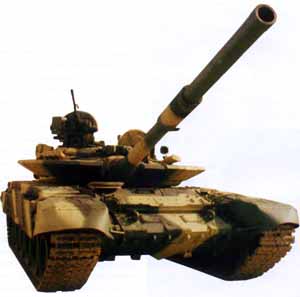 |
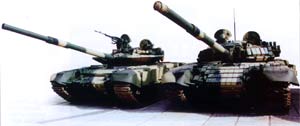 |
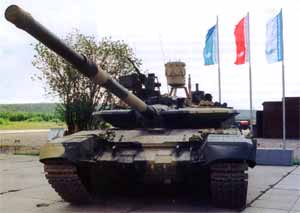 |
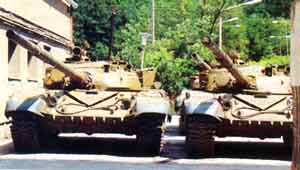 |
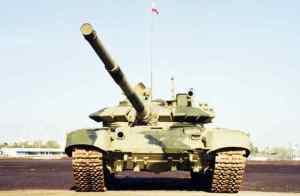 |
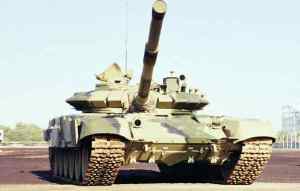 |
 |
 |
 |
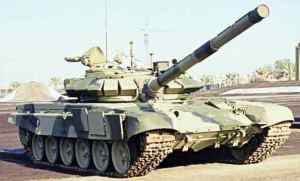 |

